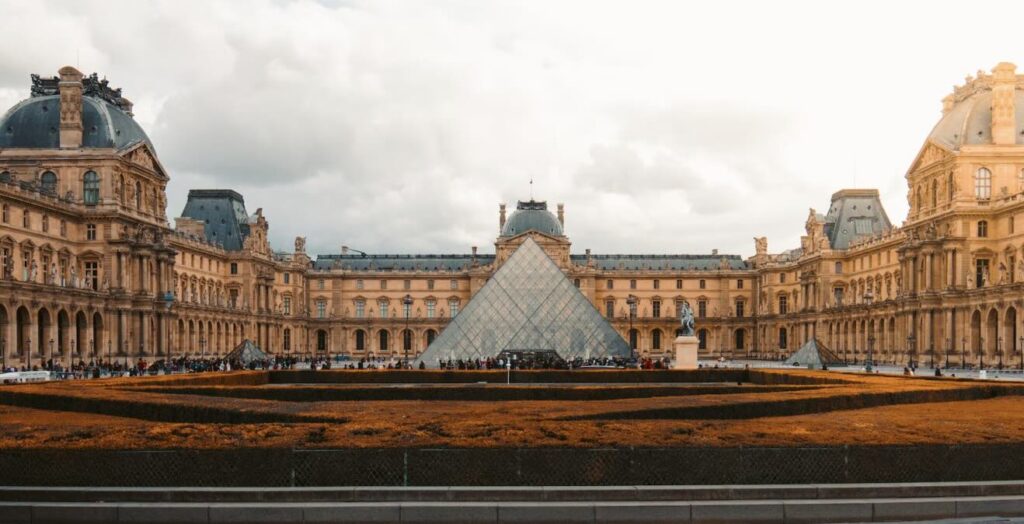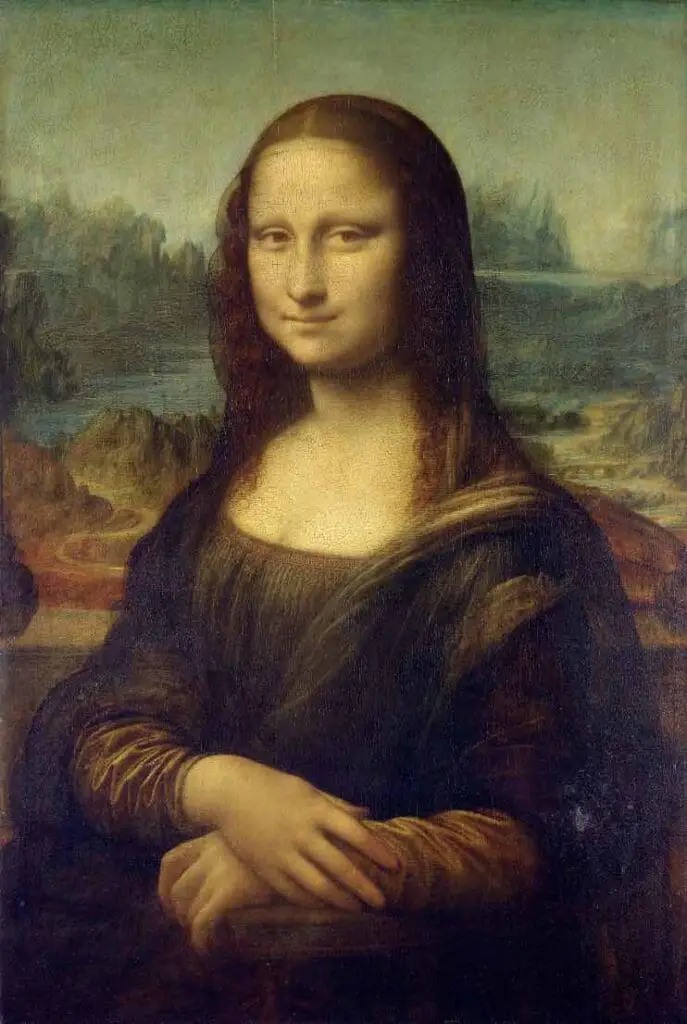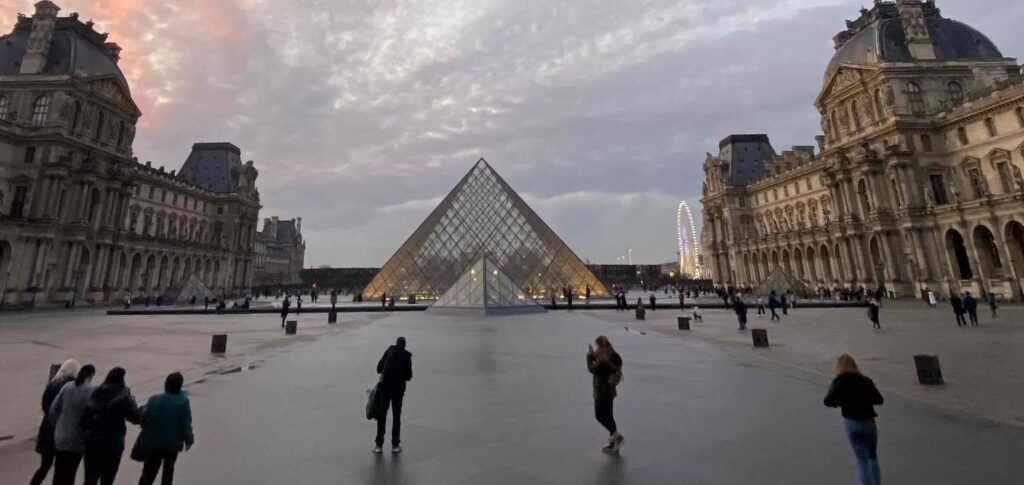One of the most fascinating museums globally is the Louvre Museum in Paris. The Louvre history and the museum are filled with many interesting facts.
The Louvre is the largest museum globally; it was once built as a fortress to protect the city of Paris. Under the French Republic’s rule, General Napoleon expanded the Louvre’s collections. One of the most important paintings at the Louvre is the Mona Lisa painting by Leonardo da Vinci. The Louvre museum is said to have ghosts that roam the halls; discover these and other facts by reading our top seven Louvre museum facts.
Table of Contents
- Seven Intriguing Facts About the Louvre Museum In Paris, France
- Frequently Asked Questions
- Related Questions
Seven Intriguing Facts About the Louvre Museum In Paris, France
The Louvre Museum in Paris stands as a beacon of cultural magnificence and historical intrigue. Originally erected as a fortress to safeguard Paris, this monumental museum boasts a rich tapestry of stories. Its transformation from a protective stronghold to a treasure trove of art under the French Republic, notably during General Napoleon’s era, marks a significant evolution in its purpose.
Among its vast collection, the iconic Mona Lisa by Leonardo da Vinci stands out as a pinnacle of artistic achievement. Beyond the art, the Louvre is shrouded in mystique, with tales of spectral presences wandering its corridors.
Embark on a journey through our compilation of the top seven fascinating facts about the Louvre Museum, where each fact peels back a layer of this illustrious institution’s
enigmatic allure.

The Louvre – Largest Museum In The World
The Louvre, located in Paris, France, is considered the most significant museum globally. The Louvre Museum covers a total area of 72,735 m² or 782,910 ft.² of gallery space. To put this into perspective, this would be the size of about 280 tennis courts.
It isn’t easy to see all the exhibitions at the Louvre in just one day; the museum has so much on display and so many exhibitions.
The Louvre is also one of the most visited museums in Paris and worldwide. There are millions of people each year who will go through the doors of the Louvre to visit its many exhibitions.
The Louvre Was Originally Built As A Fortress
The Louvre was initially a fortress that goes back to the 12th century when King Philip decided to build a massive fort around the capital of Paris to keep Paris safe from attacks west of the city.
By 1546, the fortress had lost all of its ability to defend the city of Paris as Paris had grown. After it was a fortress, the Louvre became a primary residence for the French kings; it remained the royal palace until the palace moved to Versailles.
The Louvre is standing on the land that has a rich history for not only the city of Paris but also for France. The Louvre is an essential landmark in Paris.
You can learn more about the Louvre being a fortress by reading Why is the Louvre Called the Louvre? by clicking here.
Napoleon Expanded the Louvre Collections
Many French kings collected art, but we need to thank Napoleon and the French Revolution for the Louvre Museum becoming a museum. During the French Revolution in 1791, the Louvre was declared a place for the people to view the sciences and art.
By 1793 the Louvre museum was under the control of the French Republic, and it decided the Louvre would display some of the paintings of objects from what was then mainly the royal art collection.
The public at this time was allowed to go into the museum three days per week. This was considered a significant accomplishment during this period to enable the public to view these works of art.
We owe the Louvre and the expansion of the Louvre as a museum to Napoleon and his government; they had the insight to help ensure that the Louvre would be a museum and that the collections of art would be open for the public to be able to view.
Mona Lisa Is A Key Attraction At The Louvre
The key attraction at the Louvre Museum is the Mona Lisa painting. Millions of visitors go through the door of the Louvre each year, and almost all of these visitors will stop to view the Mona Lisa painting.

The Mona Lisa is considered one of the most valuable paintings globally and one of the most important paintings for the Louvre Museum and its collection.
To find out more about the Mona Lisa painting and the Louvre Museum, you can read our blog Mona Lisa Painting and the Paris Louvre Museum by clicking here.
The Louvre Museum Has Ten Departments
The Louvre is divided into ten different departments, which include the following:
- Near Eastern Antiquities – Near Eastern antiquities cover a vast geographical area from North Africa to the Indus River and cover a period of six millennia; this collection has over 25 rooms that have some amazing exhibits in it.
- Egyptian Antiquities of the Louvre Museum – The Louvre has an Egyptian collection that is one of the most extensive in the world; this collection gives insights into the lives of the ancient Egyptian nobility as well as the ordinary people.
- Greek, Etruscan, and Roman Antiquities – The Greek, Etruscan, and Roman Antiquities is an extensive collection and important collection. The French Royal Crown started to collect many of these artworks during the 16th century.
- Islamic Art – The Department of Islamic Arts was established in 2003 but has art that has been in France’s possession for a long time.
- Sculptures At The Louvre – The Louvre is home to a collection of what is primarily French and other European sculptures. Today there are some French sculptures (Richelieu Wing) and some foreign sculptures (Demon Wing).
- The Louvre Painting Collection – The Louvre Painting Department is the famous home of the Mona Lisa painting. But this is just one of 7000 works of art on display. The Louvre has an extensive paintings collection with works of art by French, Italian, German, English, Flemish, and Dutch as well as Scandinavian painters.
- Decorative Arts At the Lourve – All kinds of decorative art pieces are on display at the Louvre decorative art collection; the collection covers the whole decorative arts spectrum from tapestries, goldsmiths, stain glass, and ceramics.
- The Louvres Graphic Arts – The graphic art collection is a leading collection of drawings from around the world. The Louvre Graphic Arts collection is so extensive that not all the works they have can be shown at one time.
The Lovre is such an enormous museum it isn’t easy to see all their collections in just one day. Most visitors need to prioritize what they want to see and which collections are the most important to view.
The Louvre Museum Is Said To Have Ghosts
Urban legend has it that some ghosts haunt the halls of the Louvre Museum. Here are some of their more famous Louvre ghost legends:
- Belphegor The Mummy – The Louvre museum is said to be haunted by Belphegor a mummy that is at the Louvre museum. He is said to walk the halls of the museum.
- Jack the Skinner – In the 16th Century one of the henchmen of Queen Catherine de Medici, named Jean l’Ecorcheur earned himself the nickname of Jack the Skinner due to how many people he killed for Queen Catherine. Eventually, Queen Catherine had Jean l’Ecorcheur killed as she was afraid of him knowing too many of the family secrets. It is said Jean l’Ecorcheur has cursed the Royal Family who once lived in the halls of the Louvre and now walks and haunts those halls, He is known as the Red Man of Tuileries as he walks and roams this area of the museum.
The Louvre Glass Pyramids Were Added in 1989
The glass pyramids at the Louvre were added in 1989. Five glass pyramids used 95 tons of steel and 105 tons of aluminum to support this glass structure.

This is one of the unique parts of the Louvre especially when you drive by the Louvre at nighttime as I have. You can see the lights in the pyramid against the ancient building; it is quite a magnificent sight to see.
The Louvre in Paris is a marvelous museum to visit. Not only does it have amazing collections and art like the Mona Lisa, but it also has one of the most extensive museum collections in the world. If you plan a trip to Paris, the Louvre is a museum worth seeing.
Frequently Asked Questions
Why is the Louvre Museum considered one of the most fascinating museums globally?
The Louvre Museum in Paris is renowned for its rich history, diverse collections, and iconic artworks, making it a captivating destination for art and history enthusiasts worldwide.
What was the original purpose of the Louvre before it became a museum?
Initially built as a fortress to safeguard the city of Paris, the Louvre’s origins date back to medieval times when it served a defensive role. Over the centuries, it evolved into a symbol of cultural heritage.
How did General Napoleon contribute to the expansion of the Louvre’s collections?
During the French Republic’s rule, General Napoleon played a pivotal role in expanding the Louvre’s collections, turning it into the vast and diverse museum we know today.
Which famous painting by Leonardo da Vinci is housed at the Louvre, and why is it considered important?
The Louvre is home to the iconic Mona Lisa, a masterpiece by Leonardo da Vinci. This painting is celebrated for its artistic brilliance and is one of the most famous and valuable works of art in the world.
Are there any paranormal aspects associated with the Louvre Museum?
Legend has it that the Louvre is haunted, with ghosts said to roam its halls. Explore the mysterious side of the museum and learn about the intriguing tales surrounding its alleged supernatural occurrences.
How does the size of the Louvre Museum compare to other museums globally?
The Louvre holds the distinction of being the largest museum in the world. Discover the vastness of its exhibition spaces and the extensive range of artifacts and artworks it houses.
What are some lesser-known facts about the Louvre’s history that make it unique?
Delve into the lesser-known aspects of the Louvre’s history, uncovering interesting anecdotes and details that contribute to its uniqueness as a cultural and historical institution.
How can visitors make the most of their experience at the Louvre Museum?
Explore tips and recommendations for visitors to maximize their experience at the Louvre, including must-see exhibits, ideal times to visit, and ways to navigate the extensive collections.
Are there any ongoing restoration projects or future plans for the Louvre Museum?
Stay informed about the Louvre’s commitment to preserving its heritage through restoration projects and learn about any upcoming developments or expansions that may enhance the museum in the future.
What role does the Louvre Museum play in preserving and promoting art and culture on a global scale?
Understand the Louvre’s significance as a cultural institution, its role in preserving art and artifacts, and its contribution to the global promotion of artistic and historical heritage.
Anita Louise Art is dedicated to art education, great artists, and inspiring others to find and create their art. We love art that uplifts and inspires. #ArtToMakeYouSmile! #ArtToMakeYouHappy!
If you want to see any of my art, you can find out more by clicking here. If you are interested in what inspires me and my paintings, you can discover more by clicking here.
We have a free newsletter and would love you to be part of our community; you can subscribe to the newsletter by clicking here. If you have any questions, I would be happy to talk to you anytime. You can reach me, Anita, by clicking here.
Subscribe to our Anita Louise Art YouTube Channel with great videos and information by clicking here.
Join us for our podcast “5 Minutes With Art.” Spend just 5 minutes a week with us to discover and learn about great art and artists. You can find out more about our podcast by clicking here.
Related Questions
Grandma Moses Sold Her First Painting At Age 79 – And Other Facts
Grandma Moses started a painting at the age of 78, and she sold her first paintings at the age of 79. She lived to be 101 years old, and throughout that time, she was a prolific painter that painted over 1500 different paintings. She never had the opportunity to attend art school, so she was a completely self-taught painter.
You can learn more by reading Grandma Moses Sold Her First Painting At Age 79 – And Other Facts through this link.
Am I Too Old To Start Oil Painting?
You are never too old to learn to oil paint. You can start to oil paint at any age. If Grandma Moses could learn to paint at age 78, then she set an example for us all – that you are never too old to learn to paint. There are some advantages to learning to paint when you are older vs. younger.
By clicking here, you can discover more by reading Am I Too Old To Start Oil Painting?.

